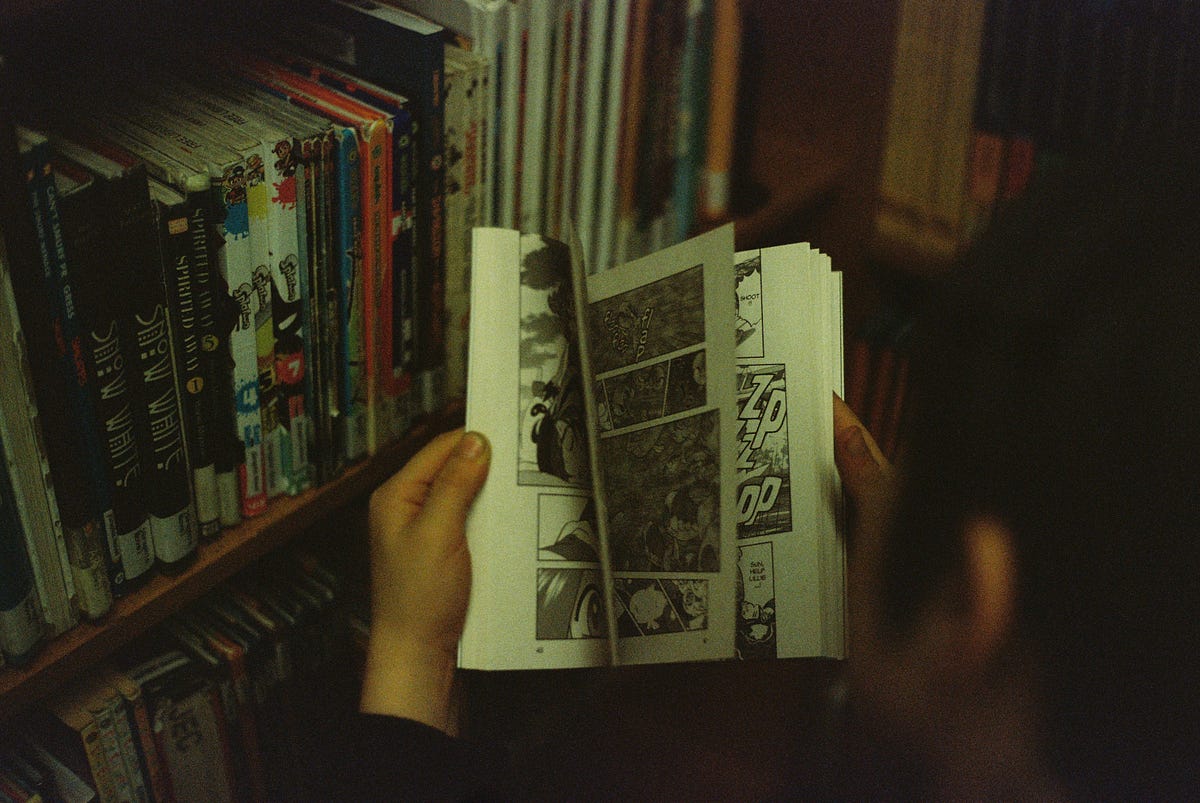On Scott McCloud’s Understanding Comics (Ch. 4 & 6):
I really enjoyed seeing how McCloud breaks down time, sound, and motion as something that can exist within static frames. The idea that time itself can be designed — compressed, stretched, or fragmented — through how panels are arranged on a page is fascinating. It reminded me of how, in film or VR, we play with transitions and pacing to create emotional beats. Comics do this visually, but in a way that still invites imagination; the “gaps” between panels become spaces for the reader’s mind to fill in.
As someone who grew up reading manga and comics, I realize I’ve taken this art form for granted. Now, looking at it critically, I see how powerful it is in creating immersive worlds while remaining incredibly minimalist. It’s also interesting how McCloud uses comics to explain comics — a very meta, self-referential move that feels natural to the medium. Having studied modern art, I can’t help but compare comics to the art world’s shift from realism to abstraction. The question of whether comics or manga can be considered “great art” feels similar to early debates around modernism. Personally, I’d argue that comics absolutely have “significant form” — they can move people, question ideas, and stand alongside film or literature in storytelling depth. It makes me wonder if there are certain stories only comics can tell — ones that live uniquely in the tension between image, time, and imagination.
On the Lecture about Breaking Down Larger Projects:
I completely relate to the chaos of the creative process. My workflow tends to be all over the place until that last-minute “it all comes together” rush. Seeing the structured process laid out was grounding — it’s a reminder that iteration doesn’t have to be stressful if you start early. The idea that making starts at phase two really stood out to me. It reframes prototyping not as a result, but as part of thinking itself.
I’ll admit that this kind of structured process demands a lot of executive function — something I’m still working on. I’ve found AI tools useful for the in-between stages, like quickly visualizing sketches or generating variations, but they can’t replace the conceptual and critical thinking that comes from doing the groundwork yourself. I also like the framing of problem, context, and intervention — it’s simple but applies to everything from graphic design to VR development. These elements shift as projects evolve, but having them as anchors helps me stay grounded and adapt meaningfully through iteration.
On the Lecture about Literature Review:
I see literature review as essential to building thoughtful and informed design work. It’s what makes a project more than just “cool” — it connects it to a broader conversation. At the same time, I understand how time constraints often push this step aside in professional practice. That’s why I think collaboration is key: sharing this research load across a team makes it more sustainable and diverse.
There’s also a difference in how you communicate research insights depending on who’s listening. Academic peers care about methodology and critical positioning, while clients and stakeholders respond more to ethos, pathos, logos, and kairos — the persuasive elements that make design feel relevant. I’ve noticed that in many design projects, the literature review process is invisible, even though it shapes the final product. Making this process more transparent could help young designers like me build credibility and articulate our thinking more clearly.
On Iterate: Ten Lessons in Design and Failure, Chapter 3:
The six elements McCarthy outlines — each with its inward and outward dimensions — felt intuitive to me. Creative work is rarely linear; it’s more of a looping continuum where you shift between reflection and action, experimentation and evaluation. Ideally, I’d love to have the time to fully explore all six, but realistically, part of the craft is knowing when to switch modes and which processes will have the most impact at a given moment. It’s comforting to see that iteration isn’t just about constant doing — it’s about navigating failure, reflection, and refinement as natural parts of making.
